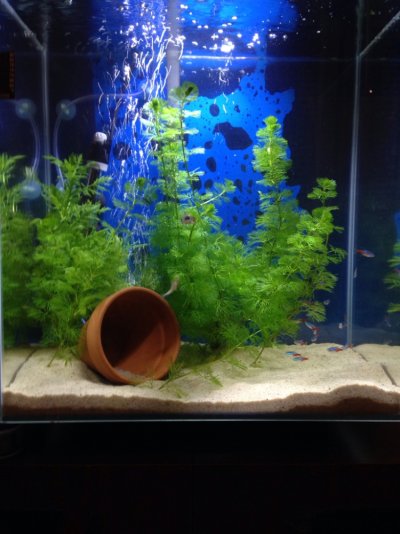Most of us have made plenty of mistakes, and some of us (like me) still are. Patience was the hardest, but arguably most important, thing that I had to learn.
As you already figured out, you're in the throws of a Fish-In cycle... and there seems to be something slowing it down. A low pH can cause the cycling process to stall out. Have you checked the pH yet?
Ive done a few Fish-In cycles and here is what Ive learned:
-Test often. There can be large and sudden swings in your parameters. You might have .5ppm ammonia in the morning, but by early evening its jumped up to 2ppm. You'll need to know how your parameters are doing so that you can take the proper steps to correct any problems that pop up.
-Large and frequent water changes. I would sometimes be doing two 50% water changes a day during Fish-In cycling. One in the morning before going to work and then another when I got back home. Smaller water changes (10-20%) aren't very effective. If you have 1ppm Nitrite and you change out 20% of the water, then you're now at .8ppm... which is still too much. On the other side of that coin, don't go TOO big. You want a small amount of ammonia available to feed the bacteria you're trying to cultivate. I tried to keep mine around .25ppm to .5ppm.
-Be careful about overfeeding. I know its fun to watch your fish go nuts at feeding time, but more food means more waste... whether its in the form of poop or uneaten food... and more waste means spikes in ammonia. The instructions on your fish food container probably tell you to feed your fish 2-3 times a day. Until your tank is cycled, I would recommend reducing that to 1-2 times a day. Don't worry about your fish starving. They can actually go many days without food and still be OK.
Hope this is of some help. Good luck.


